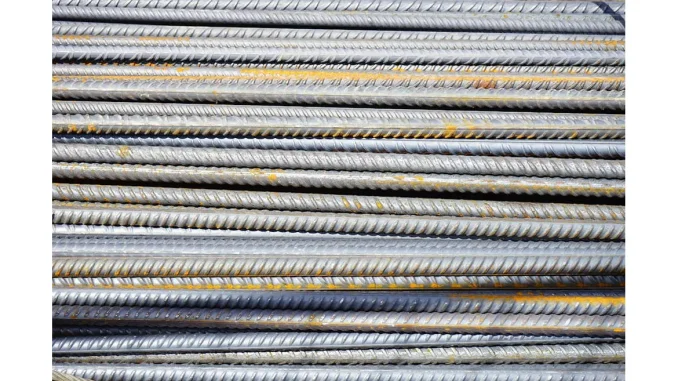
In the contemporary landscape where environmental sustainability transcends mere rhetoric, the construction industry is making substantial headway towards eco-friendly practices. At the vanguard of this green transformation is steel construction. Widely recognized as the most recycled material globally, steel sees more than 650 million tonnes reprocessed annually. This significant recyclability, paired with modern production methodologies, underscores steel’s pivotal role in conserving natural resources and curbing raw material extraction. Consequently, steel stands as a cornerstone in the quest for sustainable building solutions.
Read more about sustainable development.
The metamorphosis of steel from raw material to architectural marvel is a testament to both human ingenuity and environmental stewardship. Modern steel production utilizes innovative methods such as electric arc furnaces, which harness scrap steel and electricity. This process markedly reduces energy consumption and greenhouse gas emissions when compared to conventional blast furnaces. Dr. Jane Thompson, an environmental scientist specialising in industrial processes, asserts, “The transition to more energy-efficient production techniques is a transformative development for the industry.”
One of steel’s most compelling attributes is its durability and longevity. Structures constructed with steel necessitate significantly less maintenance and possess extended lifespans, thereby diminishing the frequency of repairs and material wastage. Steel buildings are engineered to endure harsh environmental conditions, including natural disasters like earthquakes and hurricanes, making them resilient choices amidst the challenges posed by climate change. Dr. Thompson emphasises, “In the face of climate change, the durability of steel structures is increasingly vital.”
Innovative construction techniques further enhance the sustainability credentials of steel. Prefabrication and modular construction are two such methods revolutionising the building sector. Prefabricated steel components are manufactured off-site in controlled environments, minimising waste and reducing on-site disturbances. Modular construction, conversely, allows entire sections of buildings to be assembled off-site and then transported for final assembly. This approach not only expedites construction timelines but also mitigates the environmental impact traditionally associated with building projects. John Matthews, a construction engineer, remarks, “These techniques are revolutionising the way we build, making it faster, more economical, and more sustainable.”
Despite its remarkable strength, steel is relatively lightweight compared to other construction materials like concrete. This characteristic translates into reduced foundation work, lowering the quantity of material required and the overall environmental footprint of the construction process. Additionally, the lightweight nature of steel facilitates easier transportation, further contributing to fuel efficiency and emission reductions. Steel’s role in achieving green building certifications such as LEED (Leadership in Energy and Environmental Design) and BREEAM (Building Research Establishment Environmental Assessment Method) underscores its integral place in sustainable construction. These certifications, globally recognised markers of sustainability achievement, see steel significantly contributing to earning points across various categories including Materials and Resources, Energy and Atmosphere, and Indoor Environmental Quality.
The flexibility of steel in design also permits architects and engineers to create buildings that optimise natural light and ventilation, further enhancing the sustainability of these structures. This adaptability is crucial for meeting stringent BREEAM standards and for crafting spaces that not only perform well but also promote occupant well-being. Real-world applications of steel construction abound, showcasing its versatility and sustainability in various contexts. Iconic high-rise buildings such as the Burj Khalifa in Dubai and the Shard in London exemplify steel’s strength-to-weight ratio. These structures not only push the boundaries of architectural aesthetics but also embody energy efficiency and sustainability. By reducing the building’s overall weight, steel minimises material usage and, consequently, the carbon footprint.
In residential and commercial projects, steel’s versatility is manifest. Innovative designs that incorporate energy-efficient features like solar panels, green roofs, and advanced insulation systems are increasingly prevalent. The longevity and low maintenance requirements of steel structures make them a cost-effective and sustainable choice for developers. In industrial and infrastructure projects, from bridges to railways and airports, steel’s durability ensures the longevity and safety of these critical structures. The recyclability of steel means that even when these structures reach the end of their lifecycle, the material can be reused, contributing to a circular economy.
The construction industry’s pivot towards eco-friendly practices is not merely a passing trend but a necessity in light of escalating environmental concerns. Steel construction stands out as a linchpin of this green revolution. Its recyclability, energy-efficient production, and durability render it an ideal material for sustainable building. Moreover, innovative construction techniques such as prefabrication and modular construction are making projects faster, more cost-effective, and environmentally friendly.
As developers and builders increasingly aim for green building certifications like LEED and BREEAM, the demand for steel is poised to grow. Case studies spanning high-rise buildings to residential and commercial projects illustrate steel’s versatility and sustainability, solidifying its status as a preferred choice in contemporary construction. Looking to the future, ongoing research and development in steel technology promise even greater sustainability benefits. Innovations such as high-strength, low-alloy (HSLA) steels and weathering steels are being developed to offer superior performance with reduced environmental impact. These advancements will further entrench steel’s role in eco-friendly construction.
The integration of steel construction with smart building technologies is another promising development. Smart buildings equipped with sensors and automation systems can optimise energy use, enhance indoor air quality, and improve overall building performance. Steel’s flexibility and adaptability make it an ideal material for these next-generation buildings. As urban areas continue to expand, sustainable urban development becomes increasingly critical. Steel construction will play a vital role in creating eco-friendly urban environments. From sustainable skyscrapers to green public spaces, steel’s versatility and sustainability credentials make it an essential component of modern urban planning. Dr. Thompson concludes, “Steel construction is not just a choice for the present; it’s an investment in the future of our planet.”
By understanding the multifaceted advantages of steel construction and incorporating innovative techniques and technologies, architects, engineers, and builders can create structures that meet today’s needs while contributing to a more sustainable and eco-friendly tomorrow. Embracing steel construction is not merely a decision for the present but a strategic investment in a greener future for our planet.


Be the first to comment